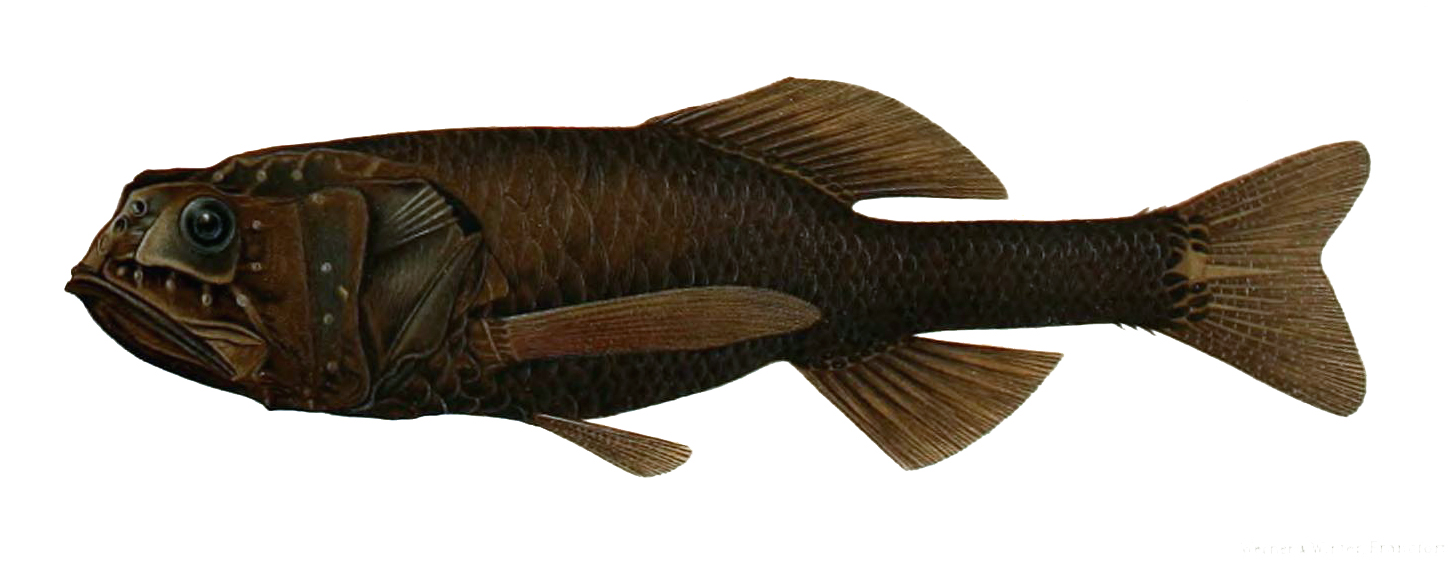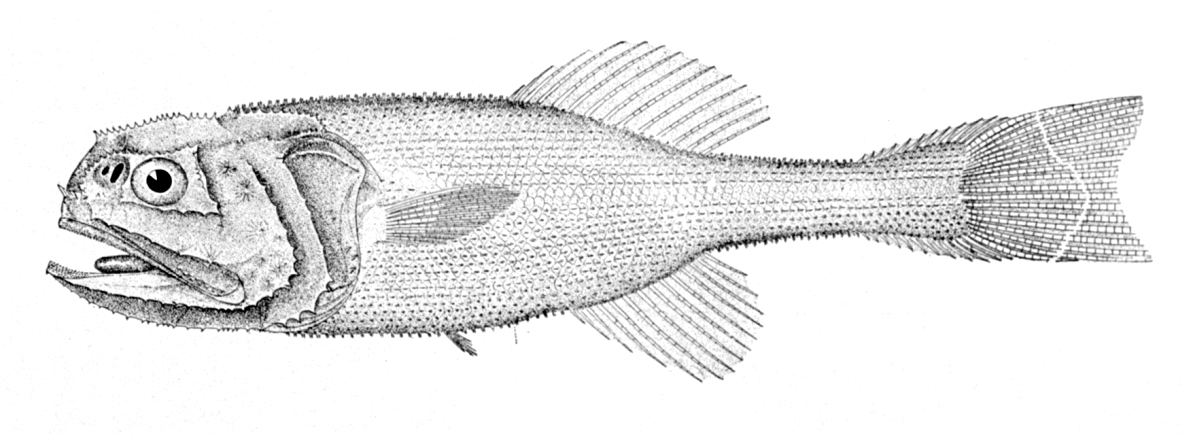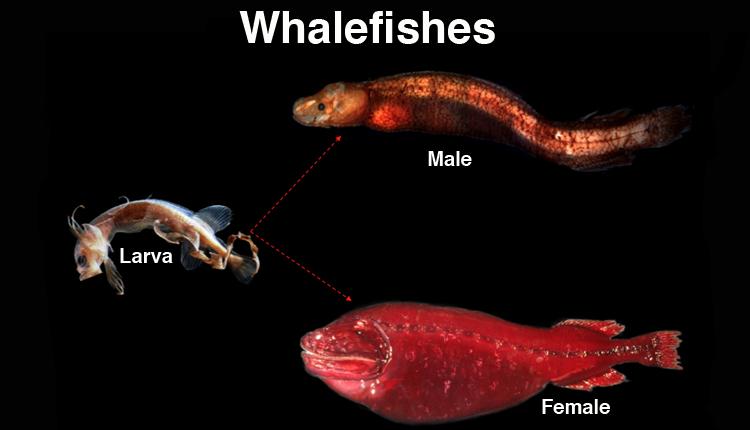Stephanoberyciformes: Pricklefishes
This order of deep sea fishes is known to have relatively thin skull bones. That's no good for a concussion! They also tend to have roundish bodies.
Melamphaidae: Bigscale Fishes

"Scopeloberyx robustus" by Emma Kissling. Licensed under Public domain via Wikimedia Commons
As you can tell by the name, they have pretty big scales, and one dorsal fin. They are also known as ridgeheads, due to the prominent ridge that is found on their heads. In addition they also have many mucus canals on the head and lack a lateral line (except some species have one or two pores).
Stephanoberycidae: Pricklefishes

"Stephanoberyx monae". Licensed under Public domain via Wikimedia Commons
These species have weak dorsal/anal spines. Some of them have spiny scales, but not all of them!
Hispidoberycidae: Hispidoberycids
There is only one species, Hispidoberyx ambagiosus. Most members of this order lack an orbitosphenoid, but not this fellow. He also has "spinulose scales," which is a fancy way of saying small spines on the scales.
Gibberichthyidae: Gibberfishes
There is one genus, Gibberichthys, with two species. There was another genus, but it was realized that it was the larvae of this genus! They do have swimbladders, though they're mainly full of fat.
Rondeletiidae: Redmouth Whalefishes
There is one genus, Rondeletia, with two species. This is the first of three whalefish families, all having large mouths and distenible stomachs. The lateral line is made of vertical columns of large pores. They have a larger body than the other whalefish families.
Barbourisiidae: Red Whalefishes

BLueFiSH.as WikiMedia Commons
There is one species, Barbourisia rufa. Tiny spines on the scales give this fish a velvety feel. Supposedly, upon transition from larvae to adult, its jaws fuse shut and it survives on the food stored in its liver.
Cetomimidae: Flabby Whalefishes

Dave Johnson, Smithsonian Institution
Another alteration from Nelson! There were originally two more whalefish families, Mirapinnidae and Megalomycteridae. However, it was finally realized that they represented the juvenile and adult forms, respectively, of Cetomimidae! They have tiny reduced eyes and lack pelvic fins. The males in this family also fuse their jaws in adulthood and survive off the food they ate as juveniles.